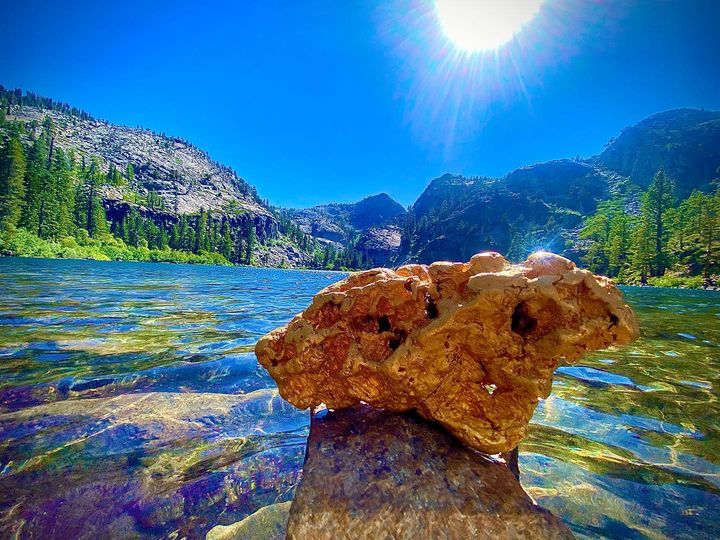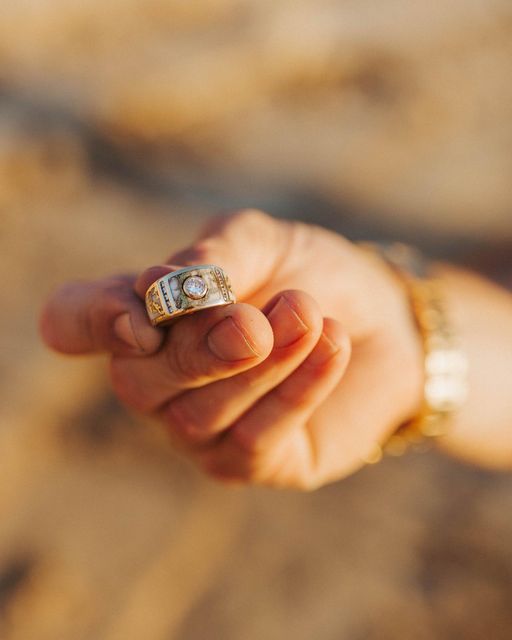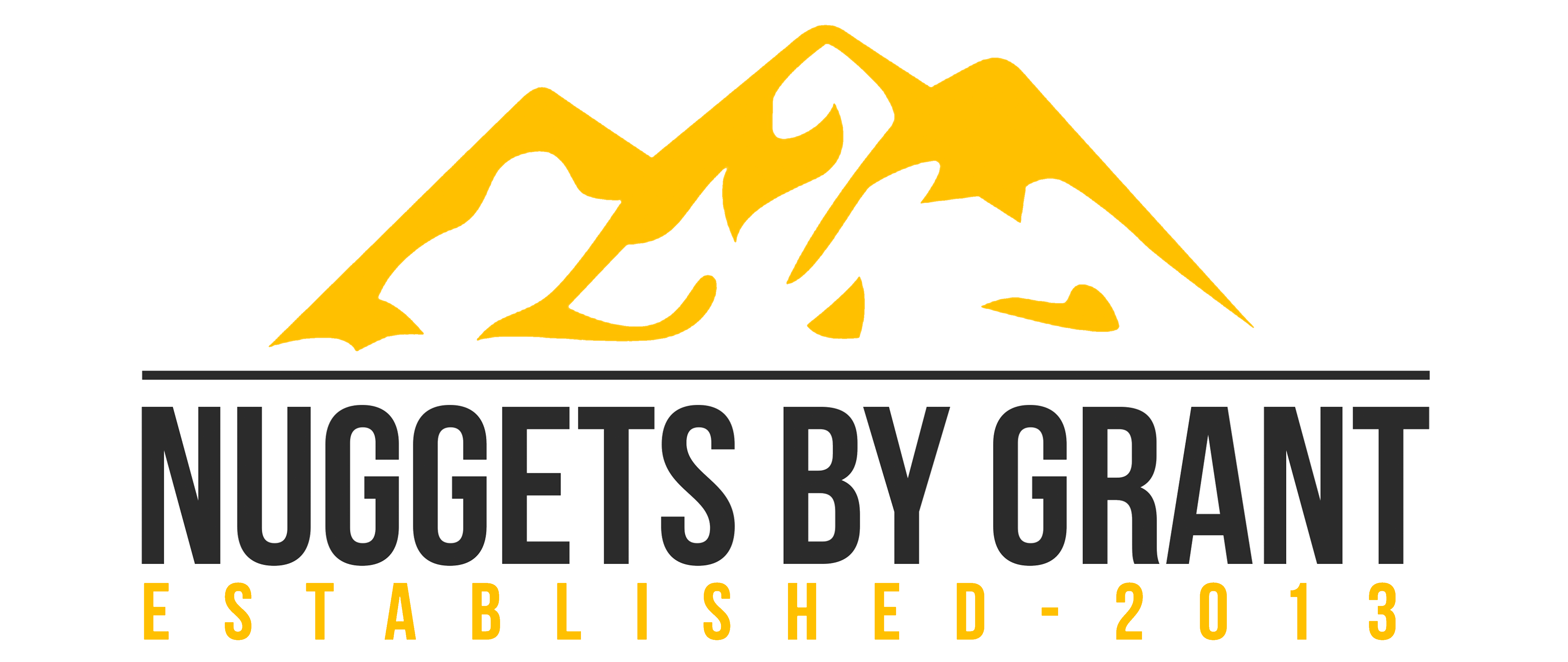Sonora Gold Nuggets 2 Grams of #10-#8 Mesh Gold Authentic Natural
- In stock, ready to ship
- Inventory on the way
Sonora Gold Nuggets 2 Grams of #10 - #8 Mesh Gold Authentic Natural
* All Nuggets are Pictured or Partially Pictured with a U.S Quarter which is 24.5MM in diameter to give you an idea of Size Proportion.
*Natural Gold Nugget Pioneering from the Sonora Mexico plains, fields, & the tip of a metal detector uncleaned direct to your living room......
- In November of 2013 I opened up my Gold Nugget eBay store. and now Nuggets by Grant has 3 overall Stores Online With thousands of satisfied customers I will continue to strive to provide the highest quality, largest selection and best priced gold nuggets on eBay. Through using my resources at the world number one Natural gold Jewelry Manufacturing shop once know as Conner's Jewelers and now the company Orocal. We buy directly from the world's Most Renowned Miners uncleaned Raw Natural Gold Nuggets in regions such as Alaska,Canada, and Australia.
So If your looking for a specific size I am sure to have it in the quality, value, and selection you desire. When you buy from me you will be guaranteed your nugget is genuine and not a man-made imitation with a certificate of authenticity "In your shipment you will be given a WARRANTY CARD offering 110% of your money back guaranteed if it isn't authentic.
SONORA MEXICO
The “Golden Triangle” dry placer district in Sonora, Mexico, lies some 80 to 100 miles south of the border. It is in desert terrain at elevations between 1,900 and 2,300 feet above sea level. Summers are torrid whereas winters are mild, with annual precipitation of less than 8 inches, which falls mostly in summer and fall thunderstorms. It lies in the Basin-Range physiographic province, which is marked by jagged north-trending mountain ranges separated by broad desert valleys. It is a harsh environment with no surface water. The forbidding desert is sparsely populated, with the nearest town being Caborca (pop. 75,000), 35 airline miles to the northwest.
History
Spaniards entered the region in the 16th Century, and Jesuit padres had established a number of missions by the end of that century. Spaniards were constantly in search of gold but the dry placers at La Cienega were not discovered until 1799. A gold rush ensued and La Cienega became a bustling, though primitive, mining camp. Gold nuggets the size of kernels of corn were supposedly scattered about on the surface. It has been said that one could collect 40 ounces of gold in 5 minutes. Don Antonio Enrique de Castro owned most of the placer ground and it is said that he made over $2 million between 1799 and 1803. In 1803, Teodoro Salazar found the San Francisco placers some 13 airline miles to the northeast of La Cienega, and the mining camps of El Boludo and El Puerto de Camou were established. La Cienega and El Boludo formed two corners of the Golden Triangle.
Many of the gambusinos (prospectors) at La Cienega rushed to the new discoveries, and there were fully 15,000 people in the Golden Triangle by 1804. Most of the easily found gold was gone by 1811, but the placers have been worked off and on to the present time. In addition, gold and silver lode deposits were found in the nearby mountains.
After Porfirio Diaz took over Mexico in 1877, Americans could work freely in Mexico. Despite hardships, mining continued during the Mexican Revolution of 1911-1917. However, foreign companies were nationalized in the 1930s. Sporadic activity has continued ever since. A lot of illegal mining has been done without the benefit of permits or concessions.
The mining laws were liberalized in the 1980s and several small American and Canadian companies commenced operations. It is not known how much gold has been mined, but some estimate that 8.2 million ounces of gold have been recovered in the district since 1799. Fineness of the gold ranges from 0.915 to 0.950.
In 1857, Henry Crabb, an American soldier-of-fortune, knew that Mexico was very weak and disorganized at that time. He was also fully aware of the Golden Triangle. He put together a private army of several dozen men, and invaded Mexico with the goal of capturing the region. He was defeated and executed at Caborca.
Placer Gold
Placer gold in the Golden Triangle was derived from quartz veins and stringers in schist and biotite gneiss of Precambrian age, and in silicified zones in rocks of Paleozoic age, all of which crop out in nearby mountains. There is gold associated with a detachment fault in desert hills south of La Cienega. It could be that the mountains contain only the roots of what were, at one time, major lode deposits, because there is far more gold in the placers than what is seen in the mountains. Mexican geologists favor the idea that gold nuggets “grew” in place by accretion, but this conclusion is not universally accepted. Nuggets weighing as much as a pound have been found, often attached to fragments of quartz.
The rich San Francisco placer gravels occur on a pediment along the west side of Sierra Santa Rosa, between El Boludo and El Tiro, a distance of 3.5 miles. There appear to be three cycles of gravel deposition, each starting out with a cemented basal gravel (argamasa). The cemented gravels are often richer than those that are not. The cemented gravel that rests directly on bedrock is the richest, especially in channels on the bedrock surface. These gravels were mined by sinking shafts and drifting on rich channels. Uncemented and weakly cemented gravels could be worked with drywashers, and many thousands of ounces of gold were recovered in that manner. The cemented gravels had to be crushed and run through trommels. In the early 1900s, Llanos de Oro Mining Company, an American outfit, reportedly built a 100-stamp mill at El Boludo, using water brought in from Trincheras by a 14-mile-long pipe-line. The company mined 30-foot-thick cemented gravel at a depth of 100 feet which averaged 0.39 ounce gold/ton.
It is still possible to obtain gold in old ground using a drywasher. The trend in recent years has been to snipe for nuggets with metal detectors, then use a drywasher when good ground has been found. A lot of drilling has been done in recent years. Geologists from the University of Sonora took 182 bulk samples at random from an area of several square miles in the San Francisco placer area, and 113 contained gold. Values ranged between 0.1 and 25 grams gold/ton. One panned sample contained 885.7 grams gold/ton.
In 1980, a shaft had been sunk to 213 feet west of El Boludo, and weakly cemented gravels were yielding up to 40 grams gold/ton, using drywashers. Even the tailings ran up to 5 grams gold/ton. It is estimated that 700 million tons of gold gravel remain to be mined in the San Francisco placer area. This does not include the Cerro Colorado, El Porvenir, and La Cienega dry placer areas to the southwest.
Summary
A lot of gold remains to be recovered in the Golden Triangle, especially in rich cemented pediment gravels at depth. It would appear that metal detectors are useful in finding areas where surface and subsurface mining might yield good results. Americans can now earn up to 100% interest in mining ventures, and even further liberalization of the mining laws might take place under President Vincente Fox. Americans who are interested in the region must first visit the offices of the Secretary General of Mines, which has a field office in Altar, a village 17 miles east of Caborca.
Those interested in visiting the area must have a good 4x4 vehicle with plenty of water and first aid, and be equipped for all emergencies. All locked gates and “aviso” signs must be respected. At least one person should have a working knowledge of Spanish. Care must be taken in regard to personal safety and security of the vehicle. Summer heat should be avoided. All services are available in Caborca.
© ICMJ's Prospecting and Mining Journal, CMJ Inc.
The Details Behind Your Gold Nugget
- What is a Natural Gold Nugget? It is a piece of gold that broke out of quartz deposits within the earth when erosion took place. It also goes by the name Placer Gold and each piece is a one of a kind with no two being exactly alike.
- Where can they be found? Wherever the effects of erosion took place. That would include rivers, streams, ancient dried up river channels and underground riverbeds.
- How pure are they? Gold nuggets range from 75 to 95 fine 18-23KT gold and can have other mineral content such as silver and copper mixed in with it.
- What sizes do they come in? Gold Nuggets come in all sizes, the smaller one range in sizes from 1 millimeter up to 6 and is often referred to as flakes. Bigger flakes are called nuggets and have been found as large as 2500 ounces although almost all nuggets bigger than 300 ounces were melted.
- How Are Natural Gold Nuggets found? They can be found in rivers and streams using a gold pan or suction dredges that act like an underground vacuum cleaner. Larger operations use large machinery that dig up huge sections of dirt weighing several tons and run it through machines that separate the gold from the dirt. Nuggets are also found using a metal detector.
- How are they weighed? They are weighed by the troy ounces. 12 ounces = one pound which differs from weight which is 16 ounces to the pound. The troy ounces are broke up into 20-penny weight to the ounces and use the symbol DWT or by the grams which has 31.1 to the ounces. The larger the nugget the more rare and valuable they are. A one-ounce nugget is now considered as rare as a five-carat diamond. (How many of those do you own?)
- Why are some real bright and others dull? Because it was formed underground in quartz deposit you often find quartz mixed in with it. When they broke off into the rivers and streams they tumbled against the sand and gravel, which gave the nuggets, it's texture but dulled it. They can be cleaned in different solutions, and then tumbled in different media to give it the shine.
- What do we mean by Authentic, Genuine, Natural Gold Nuggets? Not all Gold nuggets are natural, some people man-make them by taking smaller gold flakes melting them and casting them into the shape of a nugget. Make sure to ask if they are genuine natural gold nuggets as found by the miners and come with a certificate of authenticity.











